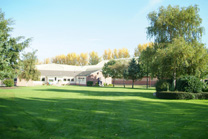themes
themes
Page 4
1 | 2 | 3 | 4
Robert’s professional experience during the 1960s and early 1970s coincided with some key changes in policy and practice, most notably the introduction of the Children’s Hearing system and of Social Work departments. These developments followed on from the Kilbrandon Report (1964) and the Social Work (Scotland) Act of 1968:
‘And then the whole attitude towards residential care changed, with the introduction of the Hearing System and the Social Work. The Social Workers as a profession always seemed to be very hostile to residential care. I think it had something to do with the training and the way that attitudes developed towards separating children from their own natural family.’
(Robert Vallance, Interviewed 15th June, 2005)
From Institutional Care to Residential Units
These changes paved the way for a shift away from institutionalised residential care and towards smaller, family-style residential units, as pioneered at Kibble by the late Peter Gardner. Robert Vallance explained some of the problems associated with the former approach to residential child care:
‘And then of course, one of the concomitant problems was, since the regimes were so institutional and the children, being vulnerable - of a vulnerable age, were more easily institutionalised, hence, when it came to them being released back home they had problems because of their acclimatisation to being institutional.’
(Robert Vallance, Interviewed 15th June, 2005)
Morag McLean, a Care and Education worker at Kibble from 1974 -1999, was horrified at conditions in Kibble’s original Victorian building when she first began working there:
‘It was such a Dickensian building. The dormitories were so vast with a lot of beds.’
(Morag McLean, Interviewed 24th July, 2008)
Fortunately, Morag would witness the demise of the old Victorian buildings, which were demolished in the 1980s, and the development of smaller residential units during her time at Kibble.
Conclusion
One hundred and fifty years after Kibble first opened its doors, Miss Kibble’s founding principles remain central to its operations. A key change during the thirteen years since it became an independent social enterprise is that Kibble’s care services have become increasingly diverse and specialised. It now offers an interconnected array of preventative and rehabilitative specialist services for young people at risk. These services span community outreach, residential care, social welfare, intensive fostering and through care (support in transition to independent living for care-leavers). Kibble also has a secure unit, which is a secure children’s home with education.

